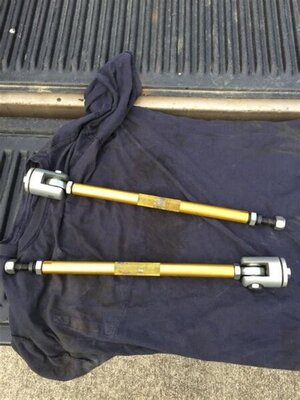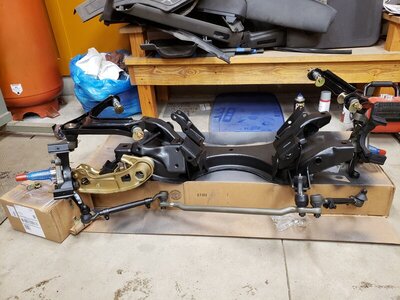The advantage of rear disc brakes is related to reduced wheel lock up and consistent performance. Discs don’t fade as easily and if they are proportioned right, they don’t lock up as easy. Drums tend to have an exponential factor where you can be mildly braking and just a little more pressure locks them up....where discs are more easy to run to the edge of locking. For a street car that is not driven on a road course, rear discs may be unnecessary.
Not to get too far off topic here -
KD, I'm sure you know more than me regarding brakes but for anyone else who isn't aware, the amount of brake pressure that causes rear drum lock up can be tuned with an adjustable prop valve plumbed into the rear brake line. Since the fronts do most of the work you're trying to make the rears hold off on full engagement until the front brakes start to grab.
I'd bet there are enough situations out there where cars are outfitted with big, fancy brakes but still use the OE distribution block. The factory combination valve has a fixed proportioning value which may not be optimal when you're using aftermarket brake parts, bigger wheels and tires, new suspension parts, etc. I don't know if there is some sort of formula or what have you for optimal proportioning range to prevent lock up but I imagine you'd need to start with a brake pressure gauge to know what the rears are seeing and then go from there.
There's a lot of factors that can relate to brake lockup besides valving - weak return springs, parking brake out of adjustment, lack of lube on the backing plates, tire pressure... theoretically they're not supposed to lock up.
Suppose brake fade would be a concern in certain types of racing or even some heavy traffic situations where you're on and off the brakes a lot. Drums can be adjusted to have little to no drag which could help to dissipate some heat. Suppose in some extreme situations air ducts could be used to cool the drums but that seems pretty extreme. Disc brakes rely on some amount of drag so they can get pretty hot too but they don't fade like drums can.
Drums tend to be smaller than discs (also lighter) because the shoe friction material covers a greater area than pads. Drums also can create more braking force per area than discs due to the duo-servo design.
Point is, 95% of the time drum brakes are fine as long as they are adjusted properly, everything is in good working order and the parts are correct for the application. Some new cars still come equipped with rear drums so they must be OK on some level.

















